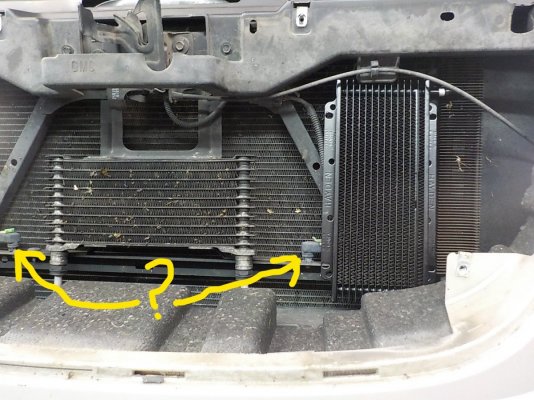That's a very good point!
Pretty sure this is my exact problem.. I'll try to make a very long story as short as possible:
TL;DR took the comment about the side baffles
to heart.. checked my own vehicle after a LONG list of other attempts, and may have finally found my issue.
I have a 2008 2500 Yukon XL with the 6.0. I live in Arizona and was going to be towing a 29ft travel trailer all the way to Montana and back in June. I did all my normal road trip preparations (checking coolant, tires, brakes, etc) and hit the road.
According to a website my wife found, the most extreme elevation change in our trip is actually here in Az going from Phoenix to Flagstaff.. so I figure if I am going to run into cooling issues.. it would be there.
Made it to Flagstaff 0 issues. Got into Utah and forced into heavy stop/go traffic and I noticed our temps would start creeping up after 5-10 minutes of sitting.. while moving there were 0 issues.
Made it to Montana with no other issues (never had to sit in heavy stop/go traffic the rest of the way + outside temps were MUCH lower) While in Montana at my sisters house I changed out the t-stat, fan clutch, belt tensioner, and belts (I try to replace anything that is unkown to me at once whenever I do a repair.. just so I know what is new-ish and what isn't)
Truck ran great on the way home until that extreme elevation change around flagstaff again (there is a big mountain that you must pass going both directions) and I ran into extreme over heating on that climb to the point I had to pull over and wait 20 or so minutes to cool off. I finished the last 2-3 miles of that climb and just as I crested the hill I got the "engine hot" message again on the dash so I pulled into the rest stop and waited another 30 or so minutes.
I couldn't find anything blatantly wrong (coolant level was good, no leaks, fan was spinning, tstat was open and I could feel coolant in both upper/lower hose).. I got back on the road (now I was almost all downhill) and was able to baby the truck home with no further issues other than running warmer than I prefer (240 ish instead of 210)
After getting home I found a hairline crack in the plastic of my radiator.. a quick search online told me that location is prone to breaking when the system is over pressurized (usually clogged radiator).
I put in a new radiator and water pump (I always do these in pairs.. makes me feel better) and I continue to overheat at idle/stopped. When moving there is 0 issues.
I found that my driver side exhaust manifold gasket was leaking right onto my coolant temp sensor, so I went to change that out.. broke an exhaust bolt, pulled the head to get the broken bolt, new head gasket, new intake gasket, and new spark plugs/wires (only driver side thus far), and a new coolant temp sensor.
Still over heating at idle/stop. Thinking my water pump was DOA or not working correctly I used my warranty to swap it out.. same issues.. put another new fan clutch (Extreme duty vs the heavy duty the first time), no change. I put a cleaning agent in (worried my block/heater core were clogged) ran it for about 15 miles, pulled everything apart and hooked a hose up to flush the whole system. (water flows freely through whole system) Same issue of over heating at idle/stop
adding in edit.. I also did a block test to verify my new head gasket (and my passenger side head) were not leaking exhaust gasses into the coolant.. found no issues there
Today I took the front bumper/grill off and found the fan was pushing hot air around by the head lights into the front bumper (IE back in front of the radiator).. I put a small fan in front oscillating (just to prevent hot air buildup in the front) and my temps stayed stable!
Tomorrow I will be building a temporary block of some kind to fill those holes and do a proper test.. but I am hopeful.

